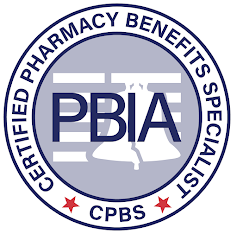Pharmacy and PBM Leader Deloitte Consulting: Specialty Drugs Rely on Personalization for Optimal Outcomes [Weekly Roundup]
News and notes from around the interweb:
- Medicaid Specialty Drug Trend Finally Surpasses 50% of Pharmacy Spend in Most Recent Magellan Rx Management Medicaid Pharmacy Trend Report. The Medicaid Pharmacy Trend Report highlights the evolving landscape of Medicaid, made even more dynamic from the events of the last two years. The report includes an in-depth analysis of class and drug trends, forecasting of Medicaid key conditions, drugs in the pipeline, and Medicaid pharmacy economics. This is also the only detailed industry source for the analysis of Medicaid pharmacy fee-for-service (FFS) gross, net, and forecasted drug cost trends.
- Key Drugs in Specialty Pharmacy Slated to Launch in 2022. Ray Tancredi, RPh, MBA, divisional VP of specialty pharmacy development and brand Rx/vaccine purchasing at Walgreens, addresses key drugs in development that are slated to launch in 2022, key drugs in development that are slated to launch in the future of note, and some of the promising and unique medications to keep an eye on that are expected to be approved in the specialty pharmacy space.
 |
| Join the Movement! |
- 2021 Kaiser Family Foundation Employer Health Benefits Survey. The researchers found that 56 percent of small companies structured their prescription drug cost-sharing in 2021 to have at least four tiers. Meanwhile, slightly more than half of the larger companies surveyed could say the same. Nearly four out of ten large employers implemented three tiers (39 percent) compared to less than three out of ten small employers (28 percent).
- Explaining the Prescription Drug Provisions in the Build Back Better Act. On November 19, 2021, the House of Representatives passed H.R. 5376, the Build Back Better Act (BBBA), which includes a broad package of health, social, and environmental proposals supported by President Biden. The BBBA includes several provisions that would lower prescription drug costs for people with Medicare and private insurance and reduce drug spending by the federal government and private payers. The key prescription drug proposals included in the BBBA would…
- Pharmacy and PBM Leader Deloitte Consulting: Specialty Drugs Rely on Personalization for Optimal Outcomes. The high cost of specialty drugs makes it important to use companion diagnostics and other tests to make sure the drug is going to the right patient, said George Van Antwerp, MBA, managing director, Deloitte Consulting. When we look at the cost of specialty drugs, and especially some of the cell and gene therapy drugs, which are really all about precision medicine, those costs mean they have to work. They have to be focused on and personalized to the individual.






